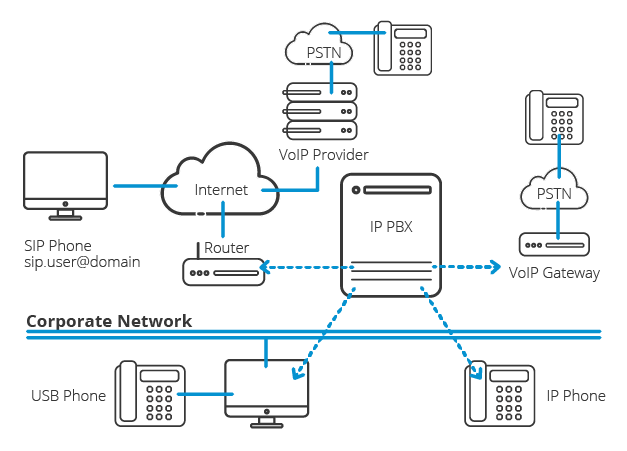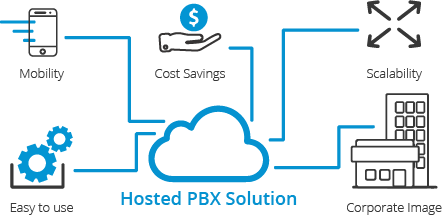Discover how 3CX Phone System revolutionizes business communication with advanced features, cost savings, and flexibility. Learn why it’s the top choice for companies embracing remote work and digital transformation in 2024.
In today’s rapidly evolving business landscape, effective communication is more crucial than ever. As companies worldwide embrace remote work and digital transformation, the demand for flexible, reliable, and feature-rich communication solutions has skyrocketed. Enter 3CX Phone System, a cutting-edge solution that’s reshaping how businesses connect, collaborate, and communicate in 2024 and beyond.
Table of Contents
ToggleKey Takeaways
- 3CX Phone System is a software-based solution offering advanced unified communications features
- It provides significant cost savings compared to traditional PBX systems
- 3CX supports remote work with mobile apps and web-based clients
- The system is highly flexible, scalable, and can be deployed on-premises or in the cloud
- 3CX integrates seamlessly with popular CRM systems and business tools
What is 3CX Phone System?
3CX Phone System is a software-based private branch exchange (PBX) that leverages Voice over Internet Protocol (VoIP) technology to provide a comprehensive communication solution for businesses of all sizes. Unlike traditional hardware-based PBX systems, 3CX is designed to run on standard operating systems and can be deployed on-premises, in the cloud, or as a hybrid solution.
Core Features of 3CX Phone System
- Unified Communications: 3CX goes beyond basic telephony, offering a complete unified communications suite that includes voice calls, video conferencing, instant messaging, and more.
- Mobility: With dedicated apps for iOS and Android, 3CX ensures your team stays connected wherever they are.
- Web Conferencing: Host virtual meetings, webinars, and training sessions directly through the 3CX platform.
- Call Center Functionality: Advanced features like call queuing, skill-based routing, and real-time reporting make 3CX an excellent choice for businesses with customer service teams.
- CRM Integration: Seamlessly connect 3CX with popular CRM systems to enhance customer interactions and streamline workflows.
3CX Phone System: Key Benefits & Features OverviewThe Evolution of Business Communication: From Traditional PBX to 3CX Phone System
To fully appreciate the value of 3CX Phone System, it’s essential to understand the evolution of business communication systems.
Traditional PBX Systems: The Outdated Approach
Private Branch Exchange (PBX) systems have been the backbone of business telephony for decades. These hardware-based systems route calls within an organization and connect to the public switched telephone network (PSTN) for external communications. While effective, traditional PBX systems have several limitations:
- High upfront costs for hardware and installation
- Limited scalability and flexibility
- Expensive maintenance and upgrades
- Lack of advanced features like video conferencing and mobile integration
The Rise of IP PBX: A Step Towards Modern Communication
As internet technology advanced, IP PBX systems emerged, offering several advantages over traditional PBX:
- Lower costs by leveraging existing data networks
- Improved scalability and flexibility
- Support for VoIP, reducing long-distance call expenses
- Integration with other IP-based services

3CX Phone System: The Next Generation of Business Communication
3CX Phone System takes the concept of IP PBX to the next level, offering a software-based solution that can be deployed on standard hardware or in the cloud. This approach provides several key advantages:
- Cost-effectiveness: By eliminating the need for specialized hardware, 3CX significantly reduces upfront and ongoing costs.
- Unparalleled Scalability: 3CX can easily grow with your business, allowing you to add or remove users as needed without significant infrastructure changes.
- Flexibility: With its software-based architecture, 3CX can be customized to meet specific business needs and integrated with other software systems.
- Advanced Features: 3CX offers a wide range of features that go beyond traditional telephony, including video conferencing, instant messaging, and mobile apps.
- Remote Work Support: 3CX’s web-based client and mobile apps make it ideal for businesses embracing remote and hybrid work models.
How 3CX Phone System Works: A Deep Dive into the Technology
To understand how 3CX Phone System revolutionizes business communication, let’s explore its core components and processes.
Key Components of 3CX Phone System
- 3CX Server: The central component that manages all communication within the system. It can be installed on Windows or Linux servers, either on-premises or in the cloud.
- SIP Trunks: Virtual phone lines that connect 3CX to the public telephone network, enabling inbound and outbound calls.
- IP Phones: 3CX supports a wide range of SIP-compatible IP phones, which connect to the system over your local network or the internet.
- Softphones: Software-based phone applications for desktop and mobile devices, allowing users to make calls from their computers or smartphones.
- Web Client: A browser-based interface that provides access to all 3CX features without additional software installation.
The 3CX Phone System Call Flow Process
When a call is made or received through 3CX Phone System, the following process takes place:
- Initiation: A call is initiated from an IP phone, softphone, or incoming call via a SIP trunk.
- Routing: The 3CX server receives the call and determines how to route it based on predefined rules and settings.
- Connection: The call is connected to the appropriate destination, whether it’s an internal extension, an external number, or a call queue.
- Feature Utilization: During the call, various features can be used, such as call recording, conferencing, or call transfer.
- Termination: When the call ends, the 3CX server logs the call details and frees up resources for future calls.
Benefits of Implementing 3CX Phone System
Adopting 3CX Phone System can bring numerous benefits to businesses of all sizes. Let’s explore some of the key advantages:
Significant Cost Savings
One of the most compelling reasons to switch to 3CX Phone System is its potential for substantial cost savings:
- Reduced Hardware Costs: By running on standard servers or in the cloud, 3CX eliminates the need for expensive proprietary hardware.
- Lower Call Costs: With SIP trunking, businesses can significantly reduce their phone bills, especially for long-distance and international calls.
- Minimized Maintenance Expenses: Software-based systems like 3CX are easier and less expensive to maintain compared to traditional hardware-based PBX systems.
- Flexible Licensing: 3CX’s licensing model is based on simultaneous calls rather than users, which can be more cost-effective for many businesses.
Enhanced Productivity and Collaboration
3CX Phone System offers several features that can boost productivity and improve collaboration within your organization:
- Unified Communications: By integrating various communication channels, 3CX allows employees to collaborate more effectively, regardless of their location.
- Presence Information: Users can see the availability status of their colleagues, making it easier to connect at the right time.
- Web Conferencing: Built-in video conferencing capabilities facilitate virtual meetings, reducing the need for travel and enabling remote collaboration.
- Mobile Integration: With mobile apps, employees can stay connected and productive even when they’re away from their desks.
- File Sharing and Screen Sharing: Easily share documents and screens during calls or conferences, enhancing collaboration and reducing miscommunication.
Improved Customer Service
3CX Phone System can help businesses provide better customer service through:
- Advanced Call Routing: Ensure calls are directed to the right person or department quickly and efficiently.
- Call Queues and IVR: Manage high call volumes effectively and provide self-service options for customers.
- CRM Integration: Access customer information during calls to provide more personalized and efficient service.
- Call Recording and Monitoring: Improve quality assurance and training by recording and analyzing customer interactions.
- Live Chat Integration: Offer instant support to website visitors, improving customer engagement and satisfaction.
Scalability and Flexibility
As your business grows and evolves, 3CX Phone System can adapt to your changing needs:
- Easy Scaling: Add or remove users and features as needed without significant infrastructure changes.
- Multi-Site Support: Connect multiple office locations under a single system, improving communication and reducing costs.
- Remote Work Support: Enable employees to work from anywhere with the same communication capabilities as in the office.
- Customizable Call Flows: Design complex call routing scenarios using the intuitive Call Flow Designer, adapting the system to your specific business processes.
Implementing 3CX Phone System in Your Business
If you’re considering implementing 3CX Phone System in your organization, here’s a general overview of the process:
Planning and Preparation
- Assess Your Needs: Determine your communication requirements, including the number of users, desired features, and integration needs.
- Choose Deployment Model: Decide whether you want to deploy 3CX on-premises, in the cloud, or as a hybrid solution.
- Select a License: 3CX offers different license types based on the number of simultaneous calls and feature sets.
- Evaluate Network Infrastructure: Ensure your network can support VoIP traffic and make any necessary upgrades.
Installation and Configuration
- Install 3CX Server: Set up the 3CX server software on your chosen platform.
- Configure SIP Trunks: Set up and configure your SIP trunks to connect 3CX to the public telephone network.
- Set Up Extensions: Create and configure user extensions, including voicemail, call forwarding rules, and other settings.
- Configure Advanced Features: Set up additional features like call queues, IVR menus, and CRM integrations.
Training and Adoption
- User Training: Provide training to employees on how to use 3CX features and applications.
- IT Staff Training: Ensure your IT team is familiar with 3CX administration and troubleshooting.
- Develop Usage Policies: Create guidelines for employees on how to use 3CX effectively and securely.
Ongoing Management and Support
- Regular Updates: Keep the 3CX system updated with the latest software versions and security patches.
- Performance Monitoring: Regularly monitor system performance and call quality to ensure optimal operation.
- User Support: Provide ongoing support to users and address any issues that arise promptly.
3CX Phone System vs. Traditional PBX Systems: A Comparative Analysis

To fully appreciate the advantages of 3CX Phone System, let’s compare it to traditional PBX systems across several key factors:
Cost
- Traditional PBX: High upfront costs for hardware, installation, and maintenance. Expensive to scale or upgrade.
- 3CX Phone System: Lower initial investment, reduced maintenance costs, and cost-effective scaling.
Scalability
- Traditional PBX: Limited by physical hardware constraints. Scaling often requires significant hardware upgrades.
- 3CX Phone System: Easily scalable through software licenses. Can accommodate growth without hardware limitations.
Features
- Traditional PBX: Limited to basic telephony features. Advanced features often require additional hardware or expensive add-ons.
- 3CX Phone System: Comprehensive unified communications features included out-of-the-box, including video conferencing, instant messaging, and mobile apps.
Flexibility
- Traditional PBX: Tied to physical hardware and location. Limited support for remote work.
- 3CX Phone System: Can be accessed from anywhere with an internet connection. Supports various deployment models (on-premises, cloud, hybrid).
Integration
- Traditional PBX: Limited integration capabilities with other business systems.
- 3CX Phone System: Seamless integration with CRM systems, email platforms, and other business tools.
3CX Phone System Success Stories: Real-World Examples
To illustrate the transformative power of 3CX Phone System, let’s look at a few real-world examples of businesses that have successfully implemented the system:
Case Study 1: Global Marketing Agency
A global marketing agency with 500+ employees across 10 countries implemented 3CX Phone System to unify their communications. The results were impressive:
- 40% reduction in overall communication costs
- 30% increase in remote worker productivity
- Seamless integration with their CRM system, improving client relationships
Case Study 2: Healthcare Provider
A mid-sized healthcare provider with multiple clinics adopted 3CX Phone System to improve patient communication and internal collaboration:
- 50% reduction in missed calls
- 25% improvement in patient satisfaction scores
- Enhanced HIPAA compliance through secure communications
Case Study 3: E-commerce Startup
A rapidly growing e-commerce startup chose 3CX Phone System for its scalability and advanced features:
- Easily scaled from 10 to 100 employees without communication disruptions
- 35% increase in customer service efficiency
- Successful integration with their e-commerce platform, improving order processing
These case studies demonstrate the versatility and effectiveness of 3CX Phone System across various industries and business sizes.
Industry-Specific Benefits of 3CX Phone System
While 3CX Phone System offers significant advantages for businesses across all sectors, certain industries can particularly benefit from its features and capabilities. Let’s explore how 3CX can address specific needs in various sectors:
Healthcare
In the healthcare industry, efficient and secure communication is crucial for patient care and operational efficiency.
- HIPAA Compliance: 3CX offers encrypted communications and secure video conferencing, helping healthcare providers maintain HIPAA compliance.
- Improved Patient Communication: Features like IVR and call queuing can help manage high call volumes in clinics and hospitals, reducing wait times and improving patient satisfaction.
- Telemedicine Support: 3CX’s robust video conferencing capabilities enable healthcare providers to offer telemedicine services, expanding their reach and improving access to care.
- Emergency Response: Advanced call routing ensures that urgent calls are quickly directed to the appropriate staff, potentially saving lives in critical situations.
- Integration with Healthcare Systems: 3CX can integrate with electronic health record (EHR) systems, streamlining workflows and improving data accuracy.
Education
Educational institutions can leverage 3CX Phone System to enhance communication between staff, students, and parents, while also benefiting from its unique pricing model.
- Campus-wide Communication: 3CX can unify communication across multiple buildings or campuses, improving coordination and safety.
- Remote Learning Support: The video conferencing and screen sharing features facilitate online classes and tutoring sessions.
- Parent-Teacher Communication: Features like voicemail-to-email can improve communication between educators and parents.
- Emergency Notifications: 3CX can be used to quickly disseminate important information or emergency alerts to staff and students.
- Cost-Effective Pricing Model: 3CX’s pricing is based on simultaneous calls rather than the number of extensions. This is particularly advantageous for educational institutions, as they don’t have to pay for phones in classrooms or offices that are rarely used to call outside numbers. This can result in significant cost savings compared to traditional per-extension pricing models.
- Scalability: The flexible licensing model allows educational institutions to easily adjust their system capacity during peak periods (like registration) and scale down during quieter times (such as holidays).
- Integration with Educational Platforms: 3CX can integrate with learning management systems and student information systems, streamlining administrative processes.
Retail
For retail businesses, 3CX Phone System can enhance customer service and streamline operations.
- Improved Customer Service: Advanced call routing and CRM integration can help ensure customers reach the right department quickly, improving satisfaction.
- Multi-Store Communication: 3CX can connect multiple store locations under one system, improving coordination and reducing inter-store communication costs.
- Seasonal Scalability: The flexible licensing model allows retail businesses to easily scale up during busy seasons and scale down during slower periods.
- Click-to-Call: Integration with e-commerce platforms can enable click-to-call functionality, potentially increasing sales conversions.
- Inventory Management: Integration with inventory systems can help staff quickly check stock levels during customer calls.
Financial Services
In the fast-paced world of finance, 3CX Phone System can provide the reliability and features needed to stay competitive.
- Compliance Recording: Call recording features help financial institutions meet regulatory requirements for storing communication records.
- Secure Communications: Encrypted calls and messages help protect sensitive financial information.
- Global Reach: 3CX’s ability to connect international offices can be particularly beneficial for global financial firms.
- Client Relationship Management: CRM integration can help financial advisors provide more personalized service to their clients.
- Mobile Trading Support: The mobile app allows traders and advisors to stay connected to clients even when away from their desks.
Implementation Challenges and Solutions for 3CX Phone System
While implementing 3CX Phone System can bring significant benefits, it’s important to be aware of potential challenges and how to address them:
1. Network Infrastructure
Challenge: Inadequate network infrastructure can lead to poor call quality and system performance.
Solution: Conduct a thorough network assessment before implementation. Upgrade bandwidth if necessary and implement Quality of Service (QoS) to prioritize voice traffic.
2. User Adoption
Challenge: Employees may resist change or struggle to adapt to the new system.
Solution: Provide comprehensive training and create user guides. Consider appointing “3CX champions” within each department to assist their colleagues.
3. Integration with Existing Systems
Challenge: Integrating 3CX with existing CRM or ERP systems can be complex.
Solution: Work with a certified 3CX partner experienced in system integrations. Utilize 3CX’s extensive API documentation for custom integrations.
4. Security Concerns
Challenge: VoIP systems can be vulnerable to cyber attacks if not properly secured.
Solution: Implement strong security measures such as encryption, firewalls, and regular security audits. Keep the system updated with the latest security patches.
5. Ensuring Business Continuity
Challenge: Downtime during the transition to 3CX can disrupt business operations.
Solution: Plan the implementation during off-peak hours. Consider a phased rollout and have a rollback plan in place.
Future Trends in Business Communication and 3CX Phone System
As technology evolves, so does the landscape of business communication. Here’s how 3CX Phone System is positioning itself for future trends:
1. AI and Machine Learning Integration
3CX is exploring ways to incorporate AI for enhanced call routing, chatbots for initial customer interactions, and predictive analytics for call volume forecasting.
2. Advanced IoT Integration
Future versions of 3CX may offer deeper integration with IoT devices, enabling scenarios like automatic conference room booking based on presence detection.
3. Enhanced Mobile Capabilities
As 5G networks become more prevalent, 3CX is likely to offer even more robust mobile features, potentially including augmented reality for remote assistance.
4. Improved Analytics and Reporting
Future iterations of 3CX may include more advanced business intelligence tools, offering deeper insights into communication patterns and employee productivity.
5. Expanded Unified Communications
3CX continues to evolve its unified communications offerings, potentially incorporating new channels like social media messaging directly into the platform.
Common Misconceptions about VoIP and 3CX Phone System
Let’s address and debunk some common myths about VoIP and 3CX Phone System:
1. VoIP Call Quality is Poor
Reality: With proper network configuration and sufficient bandwidth, VoIP call quality can be equal to or better than traditional phone lines.
2. VoIP is Not Secure
Reality: 3CX offers robust security features including encryption. When properly configured, it can be more secure than traditional phone systems.
3. VoIP is Only for Large Businesses
Reality: 3CX’s scalability makes it suitable for businesses of all sizes, from small startups to large enterprises.
4. Implementing VoIP is Complicated and Disruptive
Reality: While it requires planning, with the help of a certified partner, implementing 3CX can be smooth and minimally disruptive.
5. VoIP Doesn’t Work During Power Outages
Reality: With proper planning, including UPS systems and mobile failover, 3CX can continue to function during power outages.
Conclusion: Why 3CX Phone System is the Future of Business Communication
In today’s fast-paced, digital-first business environment, having a modern, flexible, and feature-rich communication system is no longer a luxury—it’s a necessity. 3CX Phone System offers a comprehensive solution that addresses the evolving needs of businesses, from cost-effective scalability to advanced unified communications features.
By adopting 3CX Phone System, businesses can:
- Significantly reduce communication costs
- Enhance productivity and collaboration
- Improve customer service and satisfaction
- Support remote and hybrid work models
- Easily scale and adapt to changing business needs
As we’ve explored throughout this guide, 3CX’s software-based approach, combined with its rich feature set and flexibility, makes it an ideal choice for businesses of all sizes looking to modernize their communication infrastructure.
Whether you’re a small startup looking for a cost-effective solution, a mid-sized company aiming to improve collaboration, or a large enterprise seeking to unify communications across multiple locations, 3CX Phone System offers the tools and capabilities to meet your needs.
As the business world continues to evolve, 3CX is well-positioned to adapt and grow, incorporating new technologies and features to keep businesses at the forefront of communication innovation. By choosing 3CX Phone System, you’re not just investing in a phone system—you’re investing in the future of your business communication.
Take the next step towards revolutionizing your business communication. Explore 3CX Phone System today and discover how it can transform the way your organization connects, collaborates, and communicates.
Frequently Asked Questions about 3CX Phone System
1. What is 3CX Phone System?
3CX Phone System is a software-based private branch exchange (PBX) that uses Voice over Internet Protocol (VoIP) technology. It offers a complete unified communications solution, including voice calls, video conferencing, instant messaging, and more.
2. How is 3CX Phone System different from traditional PBX systems?
Unlike traditional hardware-based PBX systems, 3CX is software-based and can be deployed on standard servers or in the cloud. It offers more flexibility, scalability, and advanced features at a lower cost compared to traditional systems.
3. Can 3CX Phone System support remote workers?
Yes, 3CX is excellent for supporting remote work. It offers mobile apps for iOS and Android, as well as a web-based client that allows employees to access all features from anywhere with an internet connection.
4. How does 3CX Phone System’s licensing model work?
3CX uses a simultaneous call-based licensing model, rather than a per-user model. This means you purchase licenses based on the maximum number of concurrent calls you need, which can be more cost-effective for many businesses.
5. Can 3CX Phone System integrate with my existing CRM system?
Yes, 3CX offers integration with many popular CRM systems, including Salesforce, Microsoft Dynamics, and HubSpot. These integrations allow for features like click-to-call, automatic call logging, and screen pops with customer information.
6. Is 3CX Phone System secure?
3CX takes security seriously and offers features like encrypted communications, secure remote access, and regular security updates. When properly configured, 3CX can provide a highly secure communication environment.
7. Can I keep my existing phone numbers when switching to 3CX Phone System?
Yes, you can port your existing phone numbers to 3CX. The process is typically handled by your SIP trunk provider and can be done with minimal disruption to your business.
8. What kind of support is available for 3CX Phone System?
3CX offers various support options, including documentation, community forums, and partner support. Many businesses choose to work with certified 3CX partners who can provide local, personalized support and maintenance services.
9. Can 3CX Phone System handle high call volumes for call centers?
Yes, 3CX includes advanced call center features such as call queuing, skill-based routing, and real-time reporting. It can efficiently handle high call volumes and is suitable for both small teams and large call center operations.
10. How difficult is it to set up and maintain 3CX Phone System?
While 3CX is designed to be user-friendly, the complexity of setup and maintenance can vary depending on your specific requirements and technical expertise. Many businesses choose to work with certified 3CX partners for installation, configuration, and ongoing maintenance to ensure optimal performance.
Glossary of VoIP and 3CX Phone System Terms
To help you navigate the world of VoIP and 3CX Phone System, here’s a glossary of common terms:
VoIP (Voice over Internet Protocol)
A technology that allows voice calls to be made using Internet Protocol (IP) networks.
PBX (Private Branch Exchange)
A private telephone network used within a company or organization.
SIP (Session Initiation Protocol)
A signaling protocol used for initiating, maintaining, and terminating real-time sessions that include voice, video and messaging applications.
SIP Trunking
A service that connects your PBX to the public switched telephone network (PSTN) via the Internet.
Unified Communications (UC)
The integration of various communication tools like voice, video, chat, and email into a single platform.
IVR (Interactive Voice Response)
An automated phone system technology that allows incoming callers to access information via a voice response system.
QoS (Quality of Service)
A feature of routers and switches which prioritizes voice or video traffic over other types of network traffic.
Softphone
A software program for making telephone calls over the Internet using a general purpose computer, rather than dedicated hardware.
IP Phone
A telephone that uses Internet Protocol to transmit voice communication.
E911
Enhanced 911, a feature of the 911 emergency-calling system that automatically associates a physical address with the calling party’s telephone number.
3CX Phone System, VoIP, Unified Communications, Business Communication, Remote Work, Cloud PBX, CRM Integration, Video Conferencing, Call Center, Mobile Communication






